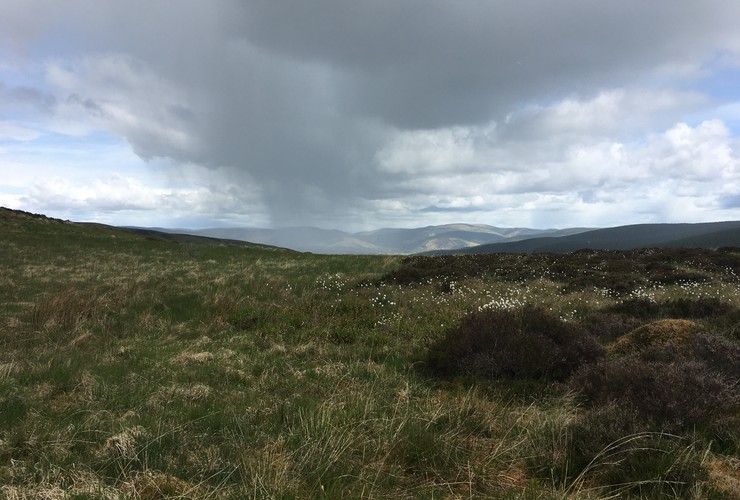Field Notes: Wood for the trees
Conservation Ranger Sarah Livingstone welcomes new signs of life at Glenlude as natural regeneration takes hold and volunteers return.

I have been doing a lot of observing lately. Looking out for signs that autumn is coming. Keeping an eye on the rowan trees for berry picking. Checking on the camera trap, hoping for red squirrels. Watching the seven ravens that have been owning the treetops, wondering if they became a family here. Hearing the jays disrupted by my presence, noticing an oak sapling underfoot.
One day this week I crept through the larch plantation in the hope of finding a squirrel drey. After working with Saving Scotland’s Red Squirrels for several years, and in the run up to their Great Scottish Squirrel Survey later this month, we are thrilled our camera footage has recently revealed at least two regular red squirrels on site.
I couldn’t find the dreys, but I did find an abundance of life that I hadn’t noticed before. There were oak and rowan saplings scattered around, wood sorrel popping up in the more open areas, owl pellets on the ground, as well as plenty of fungi I have no names for. The camera has revealed deer, fox, red squirrel and pine marten all using that area as a through route too. It reminded me that so much happens when we are not looking.
More developments can be seen across the other side of Glenlude where our latest big project is underway. In a recently felled area, we are building sizeable brash hedges in order to protect future regeneration from overgrazing – and welcoming horse-loggers onsite, to remove the timber inside these newly created natural exclosures.
Now that small numbers of volunteers are back on site, we have been hard at work preparing this area for planting up later in the autumn. During this week’s work party, we noticed the felled area had already greened up quite considerably, with birch, rowan, and elder saplings all spotted inside and outside the hedge area.
These saplings could have popped up due to wildlife or the wind transporting them from nearby trees. The jays and squirrels are no doubt contributing to the natural regeneration elsewhere on site, but in this more open section it may be that they have come from the first planted trees by Phoenix Futures.
Suddenly, the bigger picture for Glenlude seems to be coming together - we are managing to restructure the woodland working with volunteers alongside nature. It is a relief to have people back on site, but there is comfort in knowing that trees are being planted when we aren’t there too.

